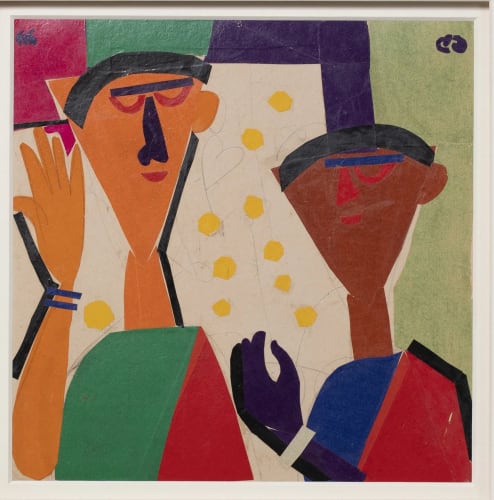In a scene from the documentary The Inner Eye, Benode Behari Mukherjee is seen dipping his fingers into a cup, as he fills it with black tea from a flask. This was a ritual for the artist, a cup of hot tea in the afternoon, slowly sipped in the isolation of his cottage tucked away close to the Visva-Bharati University in Shantiniketan. After Mukherjee lost his eyesight due to a botched cataract operation in 1957, his hands and his fingers guided much of his life and work – from measuring the level of tea in a cup to feeling the grooves and dips in a wall that he would turn into a mural.
Mukherjee, who was one of India’s most prolific modern artists, has an oeuvre so expansive that it’s almost impossible to summarise. He worked with equal ease across mediums and techniques, from watercolours, tempera on wood, textile block prints and murals, to etchings, lithographs and paper-cuts. However, to someone not familiar with the artist, a cursory glance at his body of work would not reveal one of the biggest challenges Mukherjee braved and overcame in his lifetime – his eyesight.

